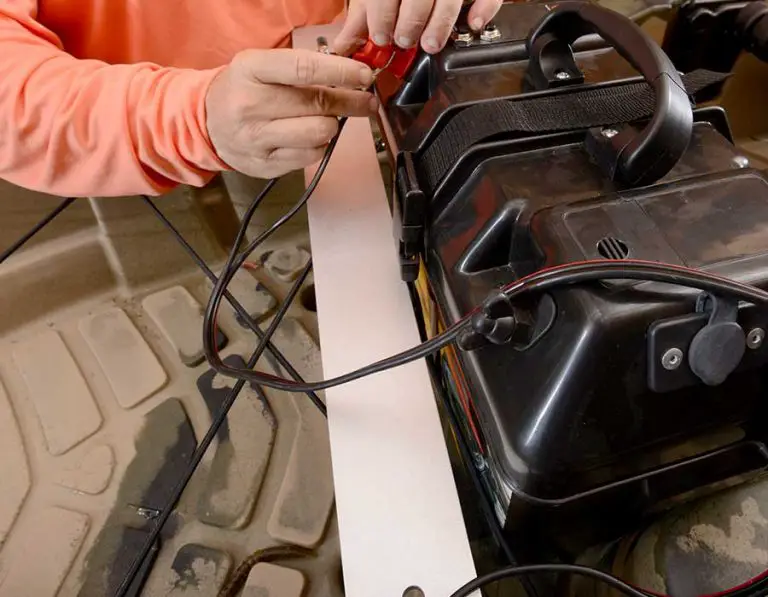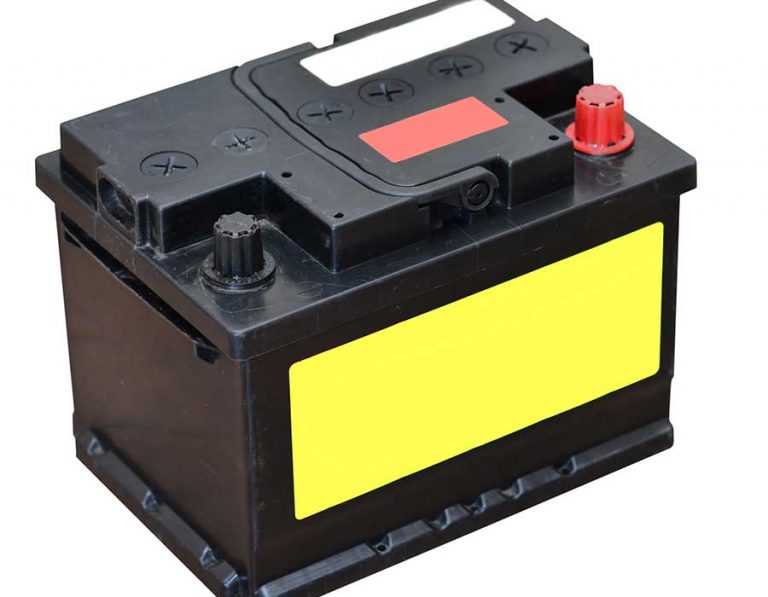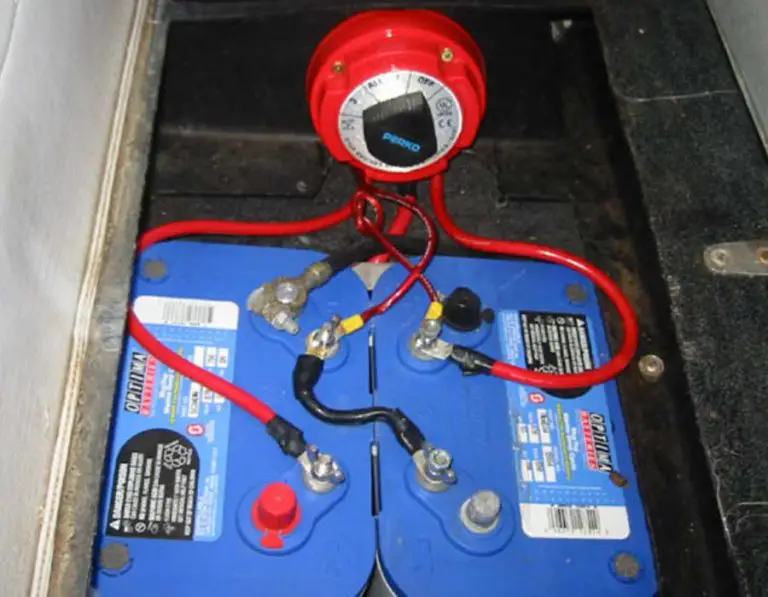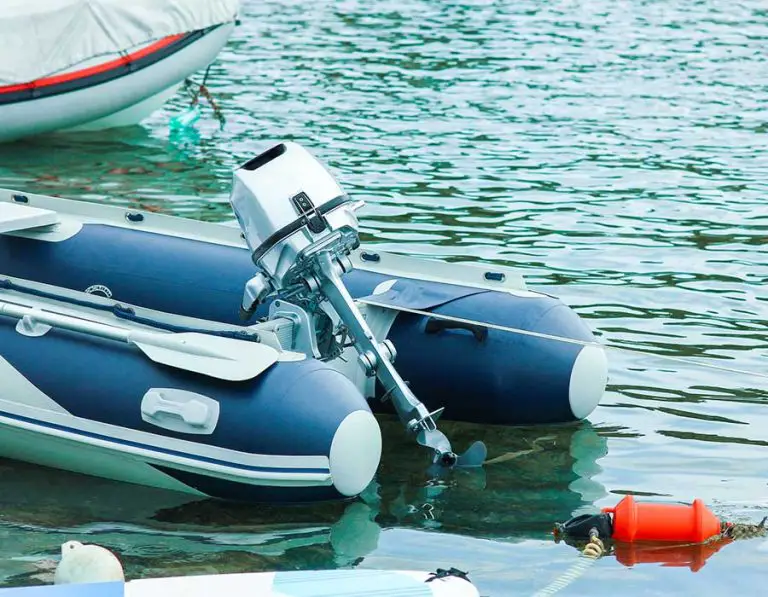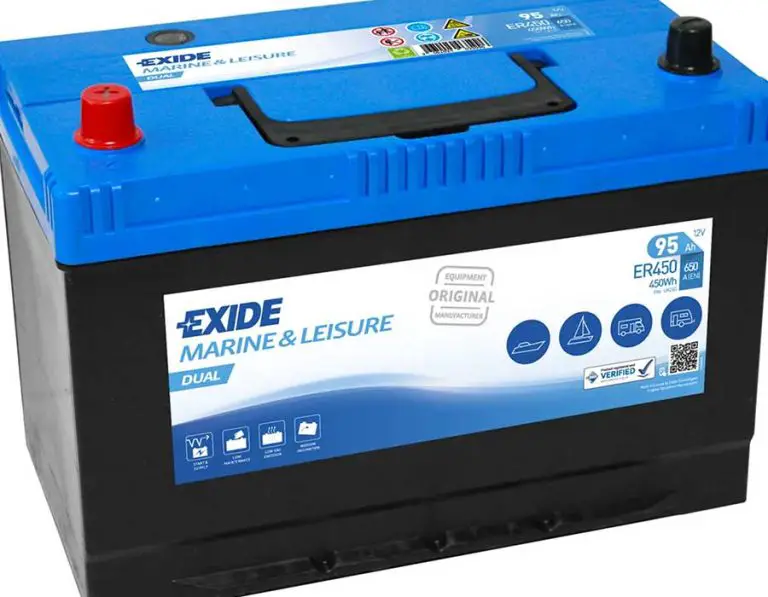How Long Do Boat Batteries Last?
Marine batteries are designed to power water vehicles. They are specially crafted for life on the water, with heavier plates and a robust build to withstand vibration and pounding peculiar to powerboats. They are relatively more expensive than regular vehicle batteries, but it is worth their function.
Some boat owners buy automobile batteries for their boats instead of marine batteries due to the price; this is a mistake because marine batteries last longer, which makes them more cost-effective in the long run.
Types Of Boat Batteries
There are three main types of boat or marine batteries, namely;
- Marine starting batteries
- Marine deep cycle batteries
- Marine dual-purpose batteries
Marine Starting Batteries
Also known as cranking batteries, they are designed to start the boat’s motor. They deliver a high burst of power to crank up the engine for a short time but would not keep it going. The engine’s alternator quickly recharges them. They are not for trolling motors or powering appliances.
Marine Deep Cycle Batteries
Thanks to their thicker plates, they are designed to discharge power over a long period slowly. The thicker plates help them to handle several charge and discharge cycles. The distinct grid pattern improves the flow of current, dense paste for durability, and different grid compositions depending on the chemistry boost the service life.
It is a good choice for powering a trolling motor and the accompanying accessories such as audio systems, a windlass, depth finders, fish locators, GPS, and the like. They, however, are not a substitute for starter batteries.
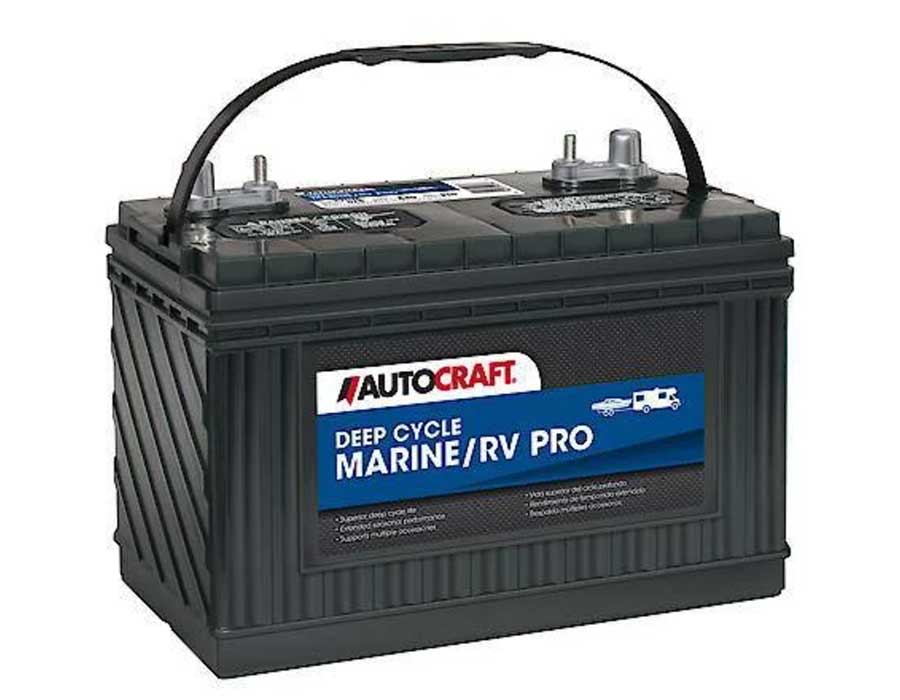
Marine Dual-Purpose Batteries
As the name implies, this battery type performs two functions as a unit. It provides efficiency in both functions but is not the best of both worlds. They are not as long lasting or efficient as separate batteries due to the more energy they have to deliver.
They last for fewer cycles compared to deep cycle batteries. Dual-purpose batteries are a good choice for smaller ones when two batteries would not fit.
Marine Battery Types According To Chemistry
Asides from being grouped into how they power, marine batteries can be grouped according to their chemistry and makeup. As follows;
- Flooded wet cell batteries
- AGM batteries
- Gel cell batteries
- Lithium batteries
Flooded Wet Cell Batteries
This is the most common type of marine battery and, in fact, automotive battery. The cell uses acid electrolyte in liquid form, which needs to be topped or filled with water from time to time.
They have a long life span and are pretty efficient, but they require high maintenance, extra care in handling, and are susceptible to boat vibrations. They are also prone to corrosion at the terminals due to contact between the metal parts and water or acid. Wet cell batteries can be bulky, mainly because of the toxic acid, which should not spill.
AGM Batteries
AGM batteries are fully known as Absorbent Glass Mat batteries, which means that they have a fiberglass mat, dipped in the electrolyte, separating the battery plates. The contents of the battery are tightly held together in the case under high pressure.
AGM batteries require little to no maintenance and deliver a heavy-duty power supply. However, AGM batteries are heavy and do not respond well to overcharging. Ensure to monitor the battery while it is charging and stop once it is fully charged.
Gel Cell Batteries
Gel cell batteries are very similar to wet cell batteries, except that the electrolyte is in gel form. It makes handling it safer and easier. Maintenance is not demanding because there is no need for regular refills.
It has more excellent resistance to vibrations and a lower discharge rate. They can be kept for more extended periods without having to be recharged. The con of gel cell batteries is that they are relatively more expensive and require a special charger.
Lithium-Ion Batteries
Lithium-ion batteries are a recent type of marine battery that is much lighter and more efficient than the rest. A lithium-ion marine battery is twice as light as a standard or AGM marine battery.
They have a high energy density and low self-discharge rate. Durability is one of the strengths of lithium-ion batteries, but they are expensive but worth the price regardless.
Types Of Boat Batteries According To Size
Boat batteries can also be distinguished by size. The size has very little to do with the capacity. Battery group size is an identification of the physical characteristics that would best fit a particular vehicle. It is determined by size, capacity, and the position of the terminals. The general size groupings are;
- Group 24
- Group 27
- Group 31
Group 24 Batteries
This is the most common kind of battery size. Most group 24 batteries function as deep cycle batteries rather than starters. They are versatile and typically used in medium-sized vessels.
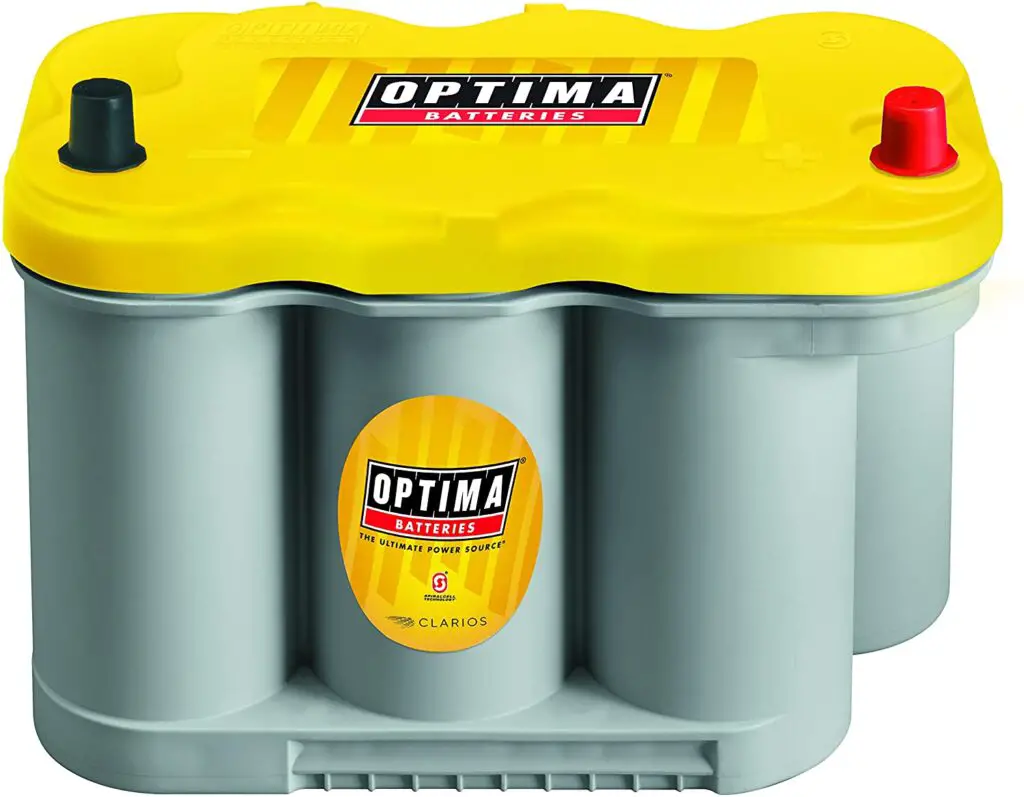
Group 27 Batteries
Group 27 batteries are larger and more powerful. They have a higher capacity than the group 24 batteries, suited to power larger marine vehicles or boats with more electric appliances and electrical demands.
Group 31 Batteries
This is the largest battery size and is used to power boats with large engines. They are commonly deep cycle batteries with high energy delivery.
How Long Do Boat Batteries Last?
Boat batteries last 3 to 4 years; some can go a couple of years beyond that if properly maintained. Most of them come with valid warranties for up to a year. Lack of proper care and incorrect usage can shorten the lifespan of your battery. The battery deteriorating earlier than the average lifespan can result from negligence, poor storage, and incorrect application. Here are some tips to increase your boat’s battery life;
Ensure Your Battery Is Fully Charged Before Storage
Make sure to charge your boat battery fully before putting it away. Fully charged or not, a stored battery will slowly self-discharge, but it is more damaging if it discharges completely due to a low charge before storage. There are seasons of the year when boating is put on hold for a while, which means you would have to leave your battery unused during this period.
The best way to store a battery is to keep it on a wood or rubber platform in an airy garage or leave it on the boat deck. Another way to store it is to place the battery in a battery box. This protects it from water, humidity, and harsh weather conditions.
Before storing the battery, check the voltage, ensuring it is above 12.4 volts. Anything below 12.4 volts could mean a replacement.
Do Not Overcharge The Battery.
Especially if you use AGM batteries, overcharging is a shortcut to quick damage. Overcharging also causes flooded wet cell batteries to swell and, along the line, leak. It also leads to overheating, which converts the electrolyte to a gaseous state, and exposes the plates. Some batteries burst due to high heat from overcharging.
Trickle chargers supply charge to your battery is slow and minimized dozes, which can make you tempted to leave it unattended; however, it is equally not safe. Regardless of the charger you choose, monitor the charging and disconnect one full.
Avoid Storing In High-Temperature Environments.
The recommended temperature for storing your battery is 59 degrees. High temperatures deplete a battery’s capacity and lead to acid leakage. It also weakens the energy capacity of the battery. On the other hand, extremely low temperatures are not as harsh on marine batteries but are not the best for them either.
Monitor electrolyte levels of the flooded cell battery
Extra Care Needs To Be Taken When Dealing With Flooded Cell Batteries.
Flooded cell battery electrolyte levels drop with use, so they need to be topped up with distilled water from time to time. The common rule for refilling electrolytes is to ensure the liquid level is above the electrodes and plates.
Do Not Deep Discharge Your Battery.
The recommended depth of discharge (DOD) for wet cell cycle and AGM batteries, so ensure not to go below that level. Too many deep discharges affect the strength of the battery and reduce its efficiency. The less the deep discharges, the more cycles the battery can go, and as a result, it lasts longer. Also, a battery that has been deeply discharged requires more time to get full.
When Should I Replace My Marine Battery?
Marine batteries go strong for up to 4 years and a bit further if extra care is taken. They cannot last for long, and no matter how much it is maintained, they will wear out around or after their lifespan period, needing you to get a replacement. Other faulty reasons include inability to hold a charge, voltage reading below 12.4V, frequent fixes in short periods, and swollen or burst battery cases.
Final Thoughts
Boating batteries are built to last, but this does not translate to careless handling. Proper care of your marine battery will make it function properly throughout its life span. Also, choosing the correct type of battery is important because not every make, group size, or brand fits your type of marine vehicle. Incompatible batteries with boats are another reason for frequent faults and fixes.

